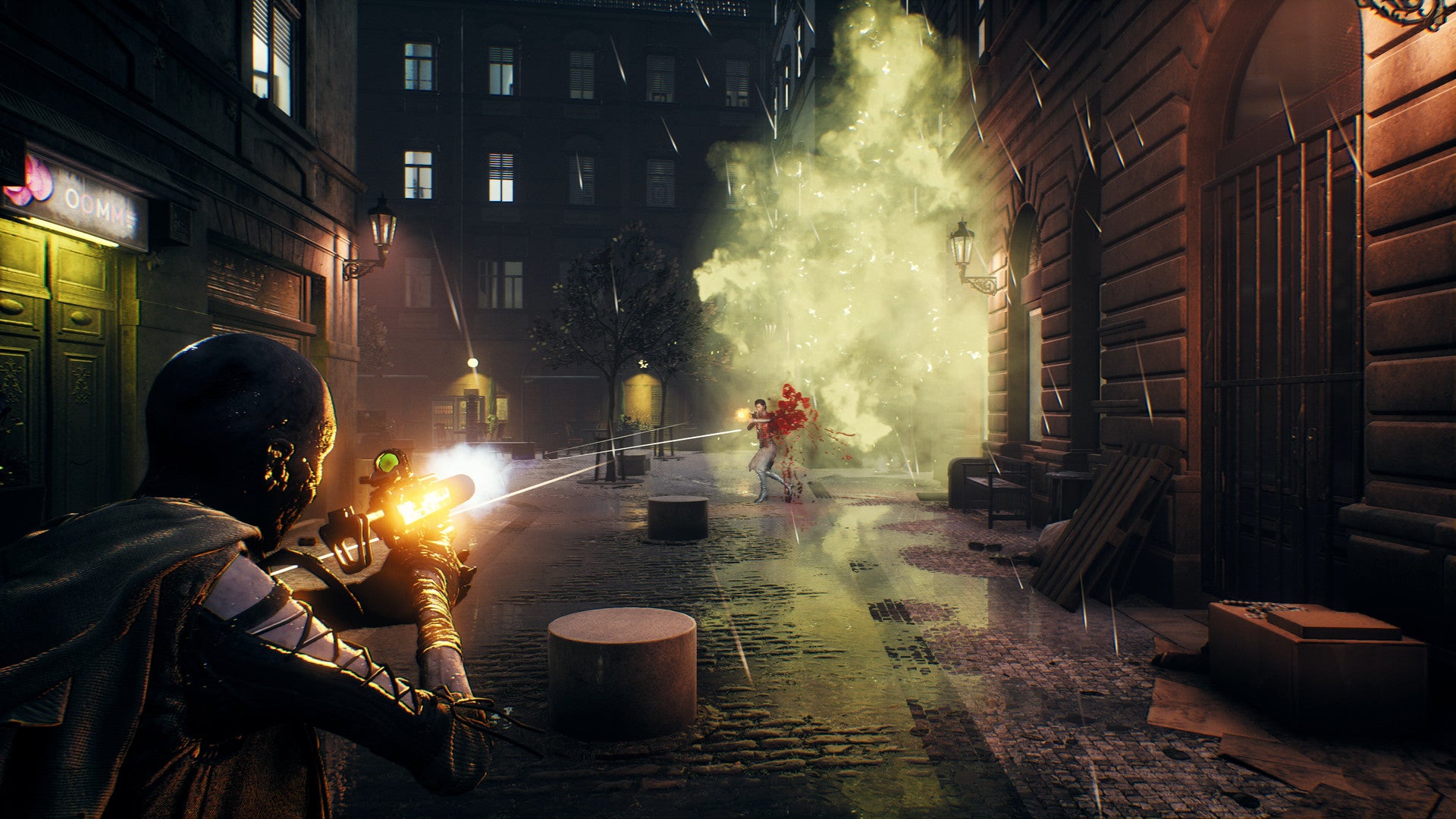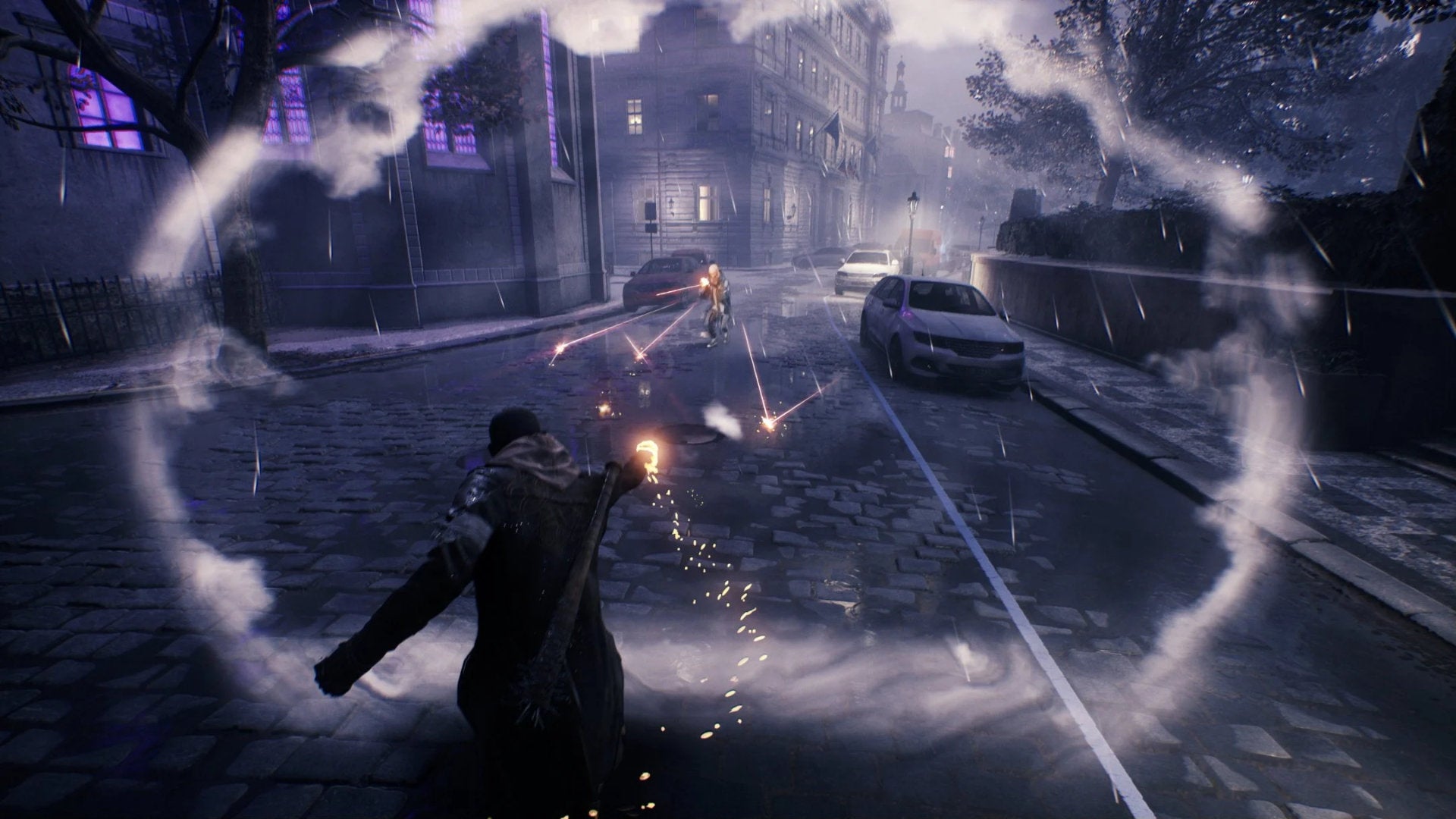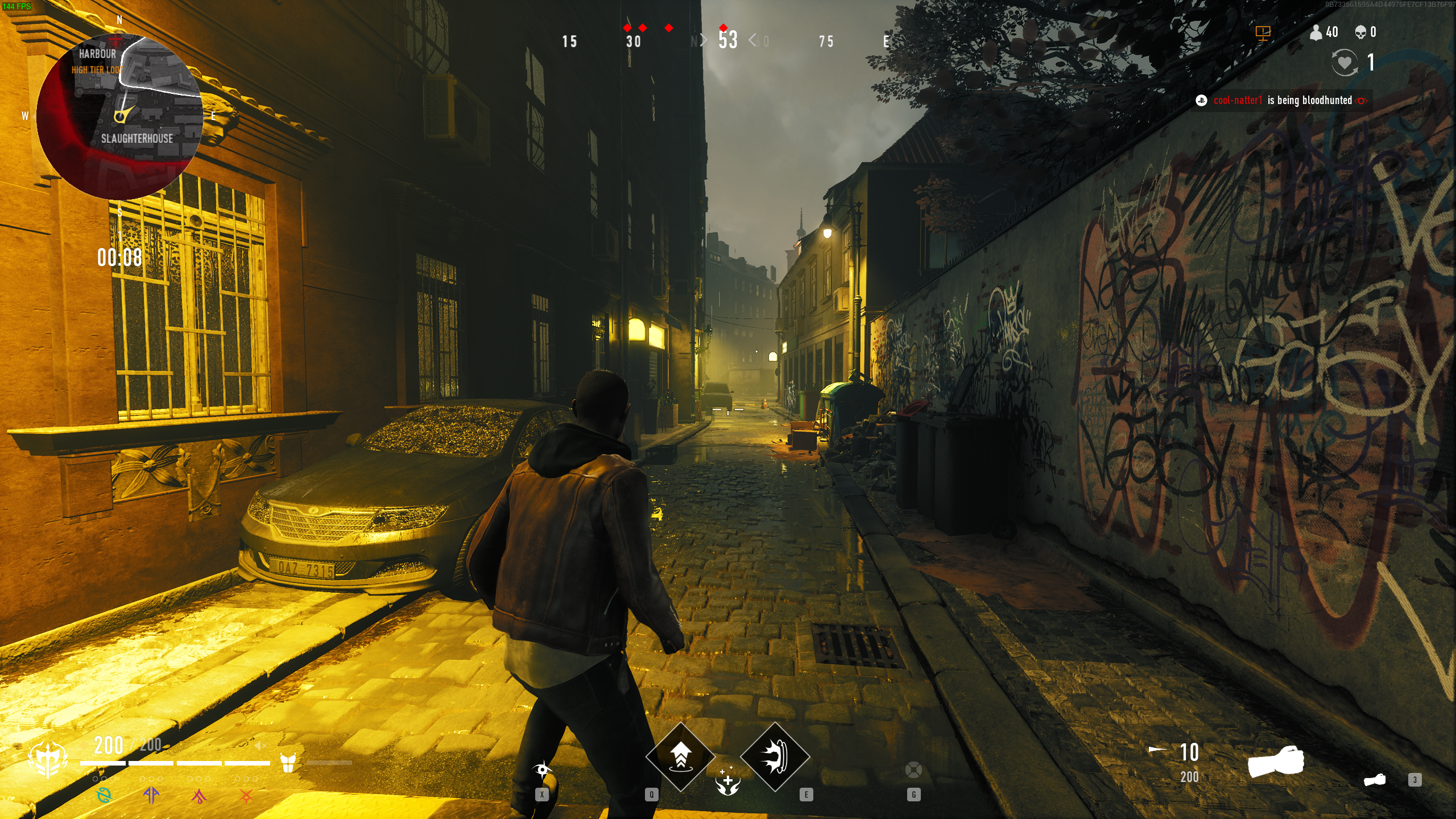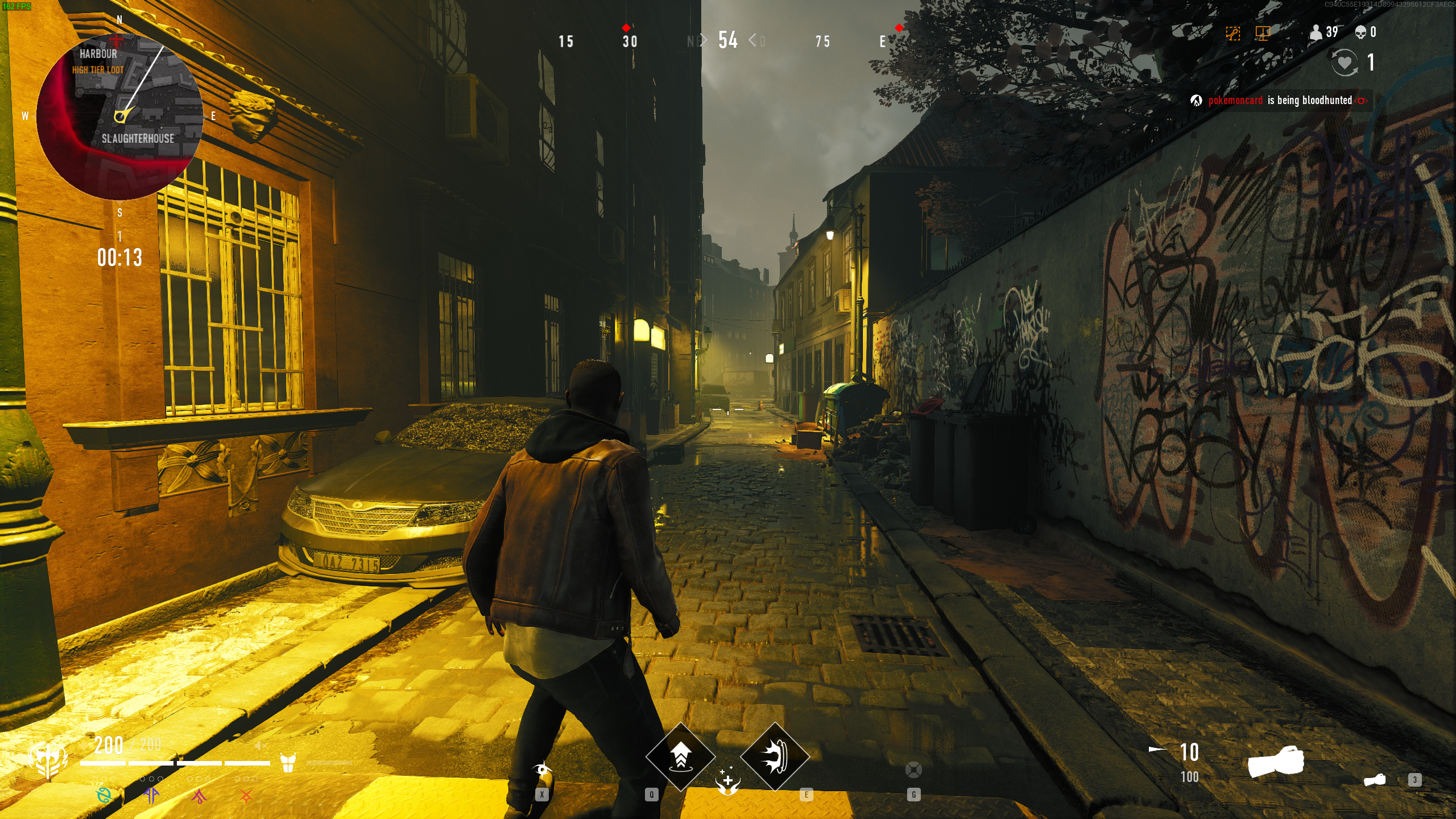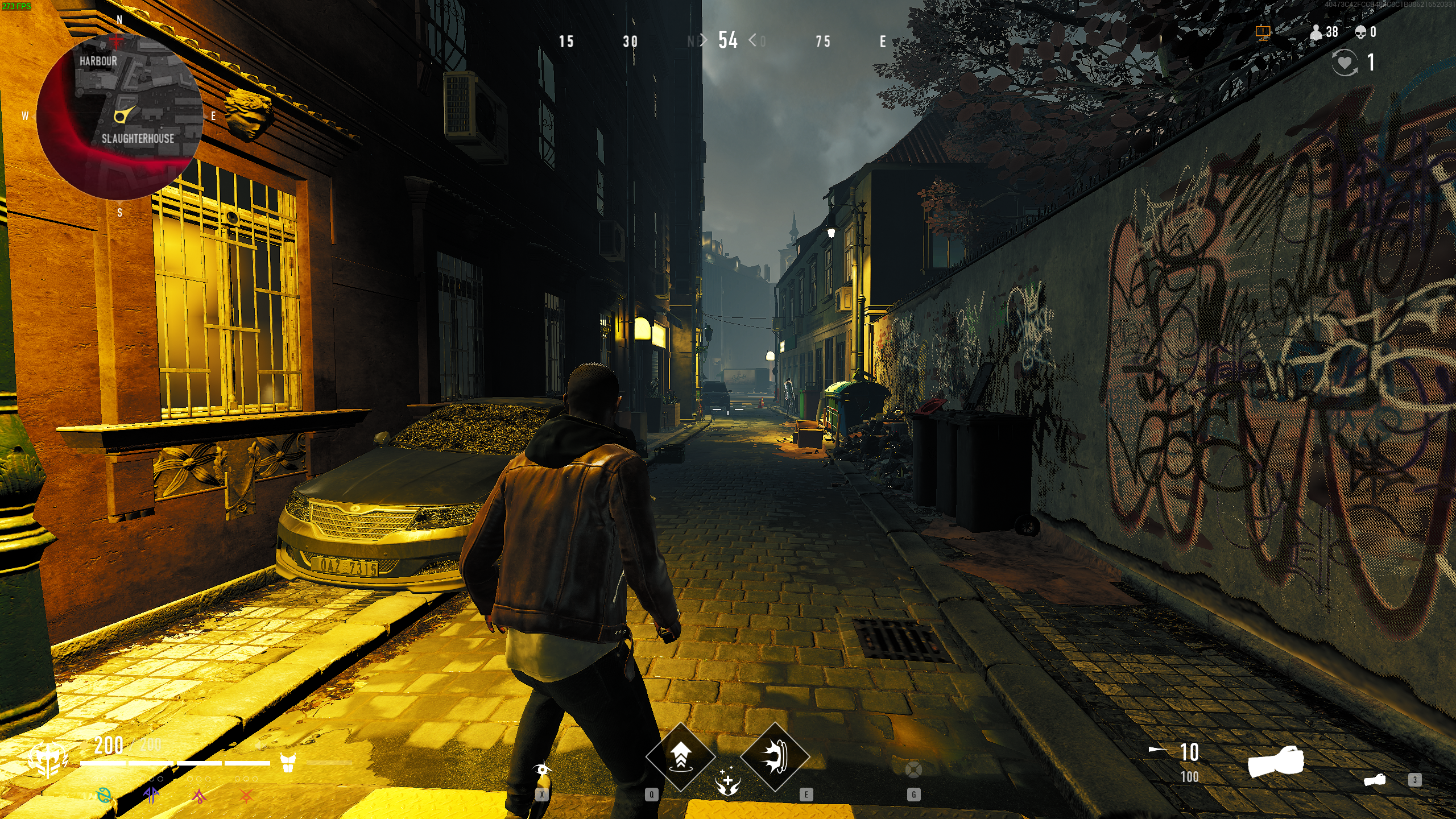Clearly Bloodhunt is not Vampire: The Masquerade - Bloodlines 2, and it’s a million miles from the original Bloodlines’ deeply RPG approach to firearms. It’s a fast, acrobatic third-person shooter, so does feel much better on high frame rates than if you were chugging along at 30fps. That said, Bloodhunt doesn’t crave the latest and best graphics cards, nor one of the best CPUs for gaming: as is often the way with free-to-play games, it can run well on older, slower hardware, even on its higher quality settings. Its choice of optional upscaling tech, AMD FSR, will also get along with any modern GPU. While its rival DLSS tends to look nicer, it does need an Nvidia GeForce RTX graphics card specifically, whereas FSR is available on AMD and Nvidia cards alike.
Vampire: The Masquerade – Bloodhunt system requirements and PC performance
Developers Sharkmob don’t make any unreasonable demands here, with even the Recommended specs comprised of years-old hardware. In fact, these current requirements have lowered from the specs that were posted alongside the early access launch, with the Core i7-10700K replaced by the Core i7-8700K in the Recommended list and the AMD Radeon RX 590 becoming the RX 580 in the Minimum list.
Vampire: The Masquerade – Bloodhunt Minimum PC specs
OS – Windows 10 (64-bit) CPU – Intel Core i5-7400 / AMD Ryzen 3 1300X GPU – Nvidia GeForce GTX 970 / AMD Radeon RX 580 RAM – 8GB DirectX version – DirectX 11 Storage – 20GB HDD
Vampire: The Masquerade – Bloodhunt Recommended PC specs
OS – Windows 10 (64-bit) CPU – Intel Core i7-8700K / AMD Ryzen 5 3600X GPU – Nvidia GeForce GTX 1080 / AMD Radeon RX Vega 64 RAM – 16GB DirectX version – DirectX 12 Storage – 20GB HDD (SSD recommended)
These requirements don’t come with specific resolution and FPS targets, but based on my testing – I primarily used an RX 580 and a GTX 1080, both with an Intel Core i5-11600K – I’d say the Minimum spec is for 60fps at 1080p and the Recommended spec is for 60fps at 1440p. With that more-than-necessary CPU, the RX 580 averaged 76fps at 1080p with the highest Ultra preset, while the GTX 1080 averaged 80fps at 1440p with the same quality. This also means you should be able to get playable framerates on PCs that don’t quite meet the minimum spec, and potentially even above 60fps if you’re not averse to lowering the quality (or enabling FSR). And for those who’ve invested in the best gaming monitors with heightened frame rates, Bloodhunt can scale up too: at 1080p, the GTX 1080 averaged 121fps on Ultra quality. The much more powerful GeForce RTX 3070 also proved more than enough for 4K, where it averaged 78fps – again using the Ultra preset, and without any upscaling help. Perhaps more importantly, I haven’t seen any of the noticeable stuttering problems that plagued Bloodhunt’s stint in early access. A quick Internet trawl suggests these haven’t been 100% nixed for everyone, but for what it’s worth, everything has run smoothly for me across the five-and-a-bit hours I’ve played, even on my older GPUs. Well, I say everything. Bloodhunt’s tutorial has a weird quirk whereby it caps to 60fps, regardless of V-sync usage or what the game’s own FPS limit is set to. Luckily this only appears to affect the tutorial, not the main Bloodhunt or Battle Royale modes, and for some reason is easily fixed by applying any graphics setting change after loading in. I’ve yet to encounter any loading problems or untoward FPS dips in the core multiplayer. Also, for any Steam Deck owners reading, Valve have tested Bloodhunt and slapped it with the Unsupported category. I’m not sure why, though – other than in-game button prompts using PlayStation controller symbols instead of the Deck’s preferred Xbox layout, it seems playable enough to me. I’ve joined multiplayer matches without anti-cheat kicking up a fuss, the UI is usable, and the Low quality preset will get a consistent 55-60fps.
Vampire: The Masquerade – Bloodhunt best settings guide
Back in the land of the desktop, you likely won’t need to perform much settings surgery to get Bloodhunt hitting at least 60fps at 1080p. Some customisation may be needed at 1440p, though this res will only run outright badly on very old or weak hardware (my RX 580 managed 47fps with the Ultra preset). For its part, the game serves up graphics options like it serves up exposed NPC necks, with most of them falling under the four presets: Ultra, High, Medium, and Low. Although, it probably needn’t have bothered with High, as to my eyes it looks exactly the same as Ultra, and even produced the exact same 76fps average when I tested it on the RX 580. Medium performs surprisingly close to Ultra as well, only bumping the RX 580’s FPS output to 82fps despite visible drops in lighting and environmental detail. It took the Low preset to deliver a genuinely significant speed boost, all the way up to 146fps, though the quality drop is severe. Left to right: Ultra, High, Medium, Low. All 2560x1440 with TAA Here’s what I found when lowering the individual options one by one, down from their Ultra preset settings and running on the RX 580. There’s no easily repeatable benchmark tool, so I manually played through the tutorial for each run, having determined it was sufficiently representative of performance in both multiplayer modes. View Distance: You spend a lot of time on Prague’s rooftops in Bloodhunt, but lowering View Distance from Ultra to Low only gave me an extra 1fps on average. And that, as you’re about to see, falls within my benchmark tests’s margin of error anyway. Material Quality: Dropping from High to Low actually returned a 75fps average, down 1fps on the full Ultra run. I think this might be down to tiny variations in my benchmark runs, but at least it shows there are no fat FPS gains to be had here. Texture Quality: This time there was no FPS change whatsoever from Ultra to Low, so again, you may as well leave this up. Texture Filtering: You can leave this up as well, as switching from 8x filtering to basic trilinear filtering produced yet another 76fps. Effects: Yup, 76fps again when swapping High to Low. Foliage: This setting has both Low and Off options, the latter sounding particulary drastic; would it just delete all the trees and bushes? No, it wouldn’t, and doesn’t even noticeably reduce their detail level or animations compared to Ultra quality. Neither the Low nor Off settings added any frames to the initial 76fps, either. Lighting Quality: Another instance of the ugliest setting, Low, somehow subtracting one frame for a 75fps average. Go for Ultra. Volumetric Fog Quality: Finally, a setting that does something! There isn’t much quality difference between Ultra and Medium quality, and there’s no performance advantage at all to the latter, but switching it off entirely shot Bloodhunt up to 91fps. That’s about a 20% improvement from one settings change, though be warned that losing volumetric fog does hurt the look of the ever-present red gas that acts as the arena boundary. On Ultra, it’s a thick scarlet storm cloud that gives Bloodhunt an almost apocalyptic vibe; on Off, it’s a pale 2D sheen. Ambient Occlusion: Turning this off resulted in another tiny rise to 77fps, though at least it doesn’t instantly flatten the game’s lighting and shadows, like some games’ AO does when it gets disabled. Screen Space Reflection: Also 77fps when changing from Ultra to Off. You still get more basic reflections, on rain puddles and the like, so this could be worth lowering in a pinch. Shadow Quality: Ultra produced 76fps, Off produced 76fps, so there’s no need to lower this one either. Anti-Aliasing: Stick with the default TAA, I say. FXAA doesn’t perform any better but exhibits more shimmering on distant objects, while turning AA off entirely leaves you with jagged edges and… no performance benefit whatsoever. Again. Subsurface Scattering: No change here, turning it Off resulted in the same 76fps that its Ultra setting did. Motion Blur: Turning this off only got me a single extra 1fps, but motion blur is unnecessary above 60fps anyway. Chromatic Aberration: This might be the most mild chromatic aberration effect I’ve seen in a game, and (perhaps as a result) turning it off didn’t grant a single additional frame per second. Film Grain: This is Off by default, even on the Ultra preset, and turning it on cut performance to 73fps. Not that you’d really notice a 3fps difference by itself, but for the purposes of balancing visuals with speed, you’re better of without it. Bloom: This is one of the more visually noticeable settings to downgrade, not that it seems to help performance much. Or at all – turning bloom off produced yet another 76fps average. Lens Flares: Another setting you can leave on High or turn off to suit your preferences, as there’s no performance difference between the two. Light Shafts: Another binary On/Off setting. Turning it off added 1fps, though I preferred having the extra effect. AMD FSR 1.0: As per usual with FSR, I don’t suggest using anything below its Ultra Quality setting; it just looks too Vaseline-y. 1080p is also perhaps too low a starting point for its upscaling, which did push the frame rate all the way up from 76fps to 99fps, at the cost of an overall lack of sharpness. It works much better at 1440p. There’s still a juicy FPS bonus to be had – up from 47fps to 67fps, in the RX 580’s case – and the resulting image is sharp enough to at least pass for native res. Otherwise, the vast majority of Bloodhunt’s individual settings just don’t offer enough of a performance boost to be worth fiddling with. They must have some effect, since the Low preset is so much faster than the Medium preset, that that speed boost only seems to come when applying the worst-looking settings en mass. And is that really what you want to be doing, when most decent PCs will do 60fps at 1080p on the best-looking ones? Honestly, I’m inclined to say the best settings for Bloodhunt are just what you get with the Ultra preset, as unusual as that is. But if you have a sub-minimum spec rig, and you do find yourself struggling, try the following:
Volumetric Fog: Off Screen Space Reflections: Off Motion Blur: Off
On the RX 580, this combination (with everything else left on Ultra) produced 105fps, a 38% improvement on the Ultra preset as is. Losing the fog detail isn’t ideal, but the performance tradeoff is too good to pass up when the frames aren’t so forthcoming.
